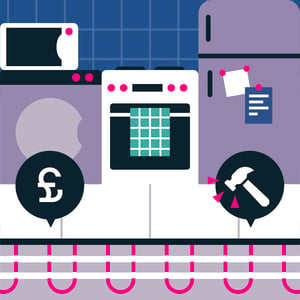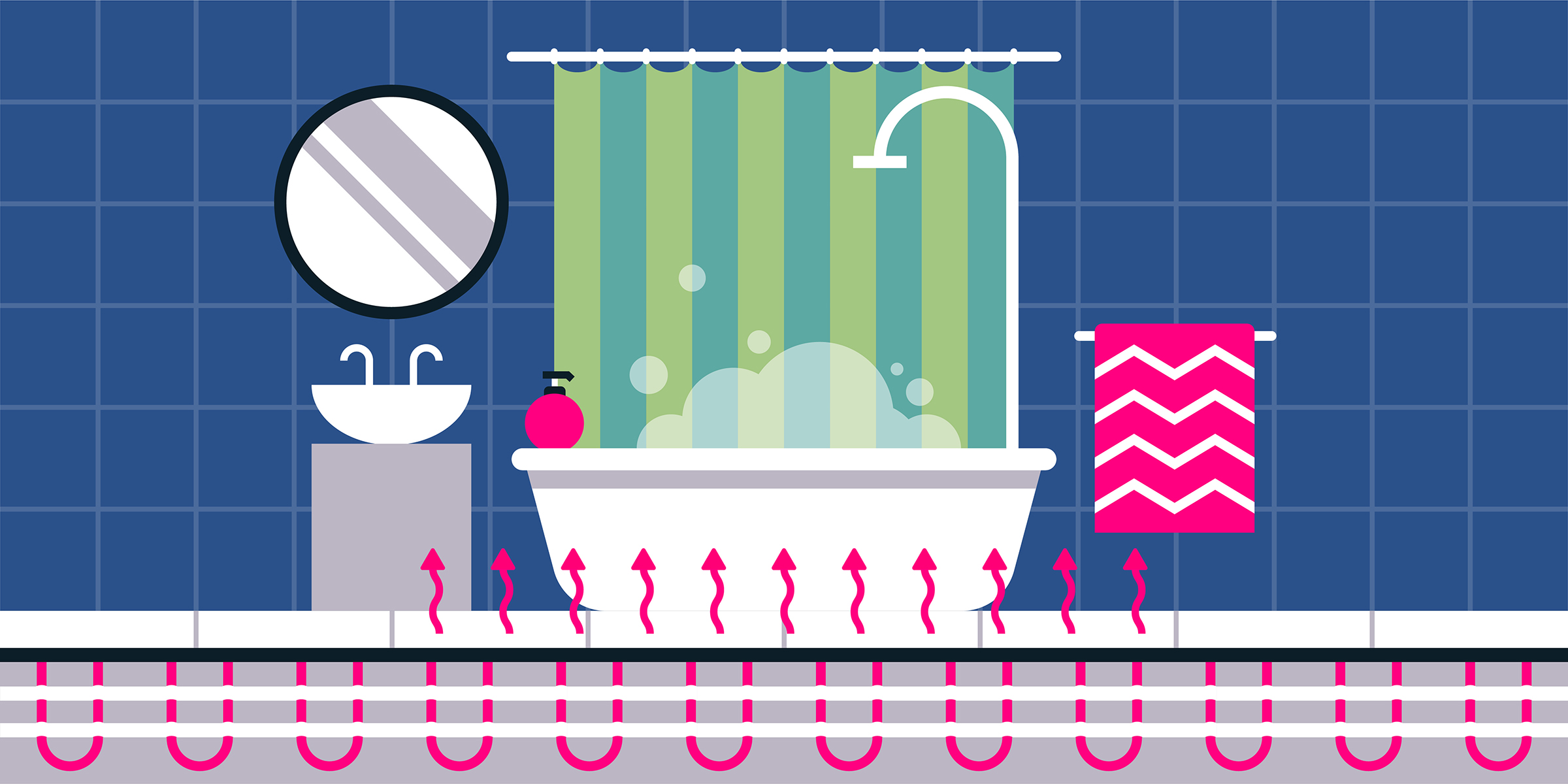Is Underfloor Heating Worth It?
Underfloor heating is toasty-warm to walk on, means you don't need to fill your rooms with radiators, and will make you the envy of house guests.
So, should you use it to heat your home?
Wasted energy makes up 30% of the average energy bill - do something about it! Get more from your smart meter with Loop.
An Introduction to Underfloor Heating
Most homes in the UK are heated by radiators or storage heaters. But underfloor heating is among alternative ways to keep houses warm.
There are two types of underfloor heating:
- Electric, or ‘dry’ underfloor heating comprises a system of electric coils, or heating mats, which are installed under your flooring. This type of underfloor heating, which is connected to your mains electricity supply, is popular as it’s cheaper to buy and install than a ‘wet’ system.
- Water, or ‘wet’ underfloor heating, also called hydronic underfloor heating, involves pumping warm water through pipes under the floor. These pipes are connected to your boiler. These systems are more efficient and cheaper to run than the ‘dry’ alternative, but more expensive to install and you’ll need professional help to do so.
Pros and Cons
Underfloor heating isn’t right for everyone. Here are some considerations:
Potential Advantages...
- Underfloor heating is nice to walk on and can be an effective alternative to radiators, especially in rooms with cold stone or tile floors, like a bathroom or kitchen.
- It can be fitted in most homes and flooring types.
- By using underfloor heating, you can control your heating more effectively, choosing to warm particular rooms that you are using.
- Your home could be deemed more desirable when you come to sell, potentially increasing its value.
- You’ll free up space on your walls that would otherwise be taken up by radiators.
- You can, if your DIY skills are up to it, install electrical underfloor heating systems yourself, although you'll need a qualified electrician to connect it.

Potential Disadvantages...
- It can be expensive and disruptive to have underfloor heating installed, particularly if it's being fitted retrospectively to an existing room or in an older home; on the other hand, it’s simpler for new builds or if you’re already having work done, such as a kitchen extension. The cost will also depend on which type of underfloor heating you choose and what sort of floor you have.
- Underfloor heating systems may take longer to heat a room, so you’ll need to combine it with a timer.
- You may be restricted by what furniture or units you can place on top of underfloor heating.
- For a ‘wet’ system, you'll need to pay for professional installation.
Is Underfloor Heating Green?
To meet tough environmental targets, the UK’s dependence on boilers fuelled by natural gas - a fossil fuel - as a way of heating homes will have to end.
But, in the search for greener ways to heat homes, where does underfloor heating fit in?
Dry systems are connected to your electricity supply. So, unless you are on a truly green tariff or generate your own renewable energy, you’re depending on what comes from the National Grid - a mix of fossil fuels, renewables and nuclear.
Similarly, wet systems are typically connected to your boiler, so are likely to be powered by gas. However, this needn’t be the case. Your wet underfloor heating could be linked to sustainable technologies, such as solar thermal energy or a heat pump - the technology which is expected to be a key part of plans to reduce homes’ dependence on gas.
In fact, according to Energy Saving Trust, air-source heat pumps and underfloor heating systems make a nice pair; heat pumps perform better than radiator-based systems because of the lower water temperatures required.
So, depending on how you power your underfloor heating, you could use it to go green.

Make the Most of Your Underfloor Heating
As well as using renewable energy sources, where possible, there are other things you can do to make the most of your underfloor heating.
For a start, use the free Loop app to monitor how much energy you’re using and when. “I discovered how much my underfloor heating was costing in my extension”, says one Loop user.
Loop can alert you if there is a problem. One person used Loop “to detect that my underfloor heating was running when it shouldn't and costing £20/week through the summer when heating was supposed to be off.”
Also, take steps to retain as much of the warmth generated as possible. That includes ensuring you have properly draught-proofed windows, doors, floorboards, loft hatches and any other gaps. The exceptions are rooms like bathrooms that need ventilation.
Used wisely, underfloor heating can be a great, green way to warm your home.
• • •
Cut Your Energy Bill With Loop
Loop is a FREE energy-saving app that links to your smart meter, analyses your energy use and shows you easy ways to save. On average, Loop users cut their energy use by 15%! How much could you save?








